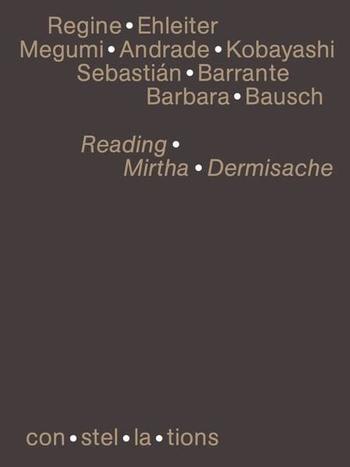Publication | con·stel·la·tions 02 – Reading Mirtha Dermisache (Ehleiter, Andrade Kobayashi, Barrante, Bausch)
News from Mar 27, 2025
Beginning in the late 1960s, the Argentinian conceptual artist Mirtha Dermisache (1940–2012) produced publications that consist of asemic writing: marks that resemble language but lack semantic content. Her artist's books, letters and postcards challenge habitual responses to both art and literature, leading us to re-evaluate how language works, how we perceive it, and how it might be distinguished from drawing. Reading Mirtha Dermisache (2025) brings together three academic essays (by Regine Ehleiter, Megumi Andrade Kobayashi and Barbara Bausch) and an artist's tribute (by Sebastián Barrante), each offering a distinct approach to "reading" Mirtha Dermisache.
The publication grew out of an event that took place in Berlin in 2024 in conjunction with the exhibition Mirtha Dermisache: To Be Read (A–Z and oxfordberlin). As part of her EXC 2020 research project Writing as Artistic Practice, art historian Regine Ehleiter (former Professional-Track Postdoc at EXC 2020, now Postdoctoral Researcher at the Chair of Digital Arts and Cultural Mediation of Witten/Herdecke University) curated the exhibition as well as this co-authored monograph.
Reading Mirtha Dermisache is part of the EXC 2020 publication series 'con·stel·la·tions' (Textem Verlag). Edited by our hub for collaborative networked projects of the same name, 'con·stel·la·tions' is designed for multidisciplinary, multi-format encounters between art and academic research with a special focus on designing the printed work. con·stel·la·tions 02 is distributed in Latin America through Naranja Publicaciones.
Visit our Instagram account for a first look into the booklet!
Regine Ehleiter, Megumi Andrade Kobayashi, Sebastián Barrante and Barbara Bausch. Reading Mirtha Dermisache. con·stel·la·tions 02. Hamburg: Textem Verlag, 2025 (open access).
